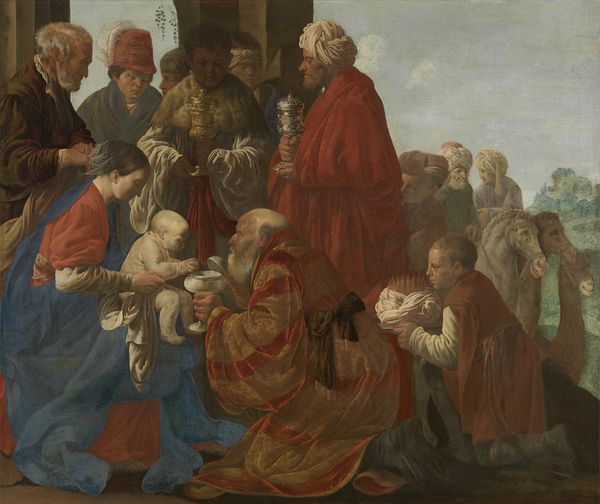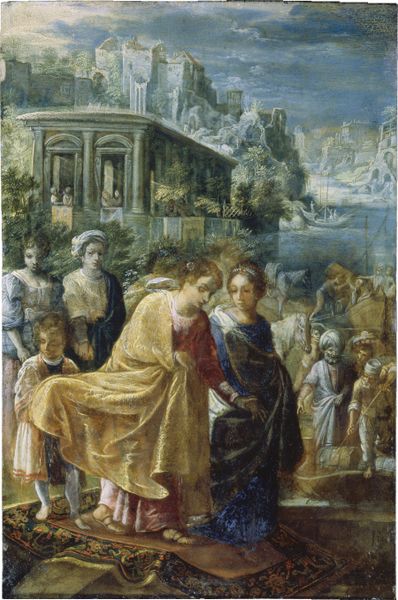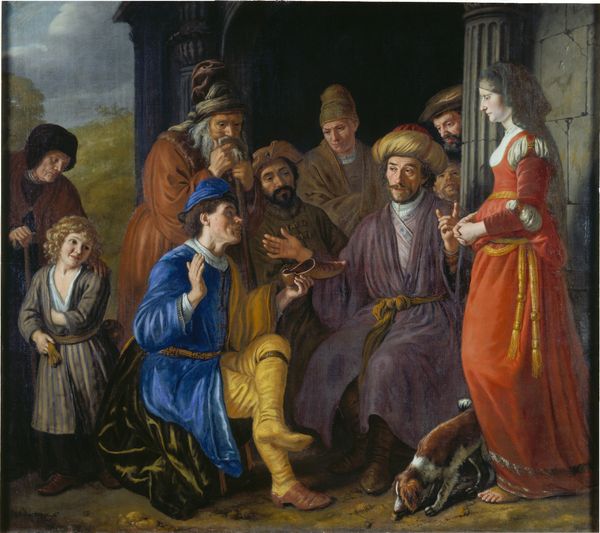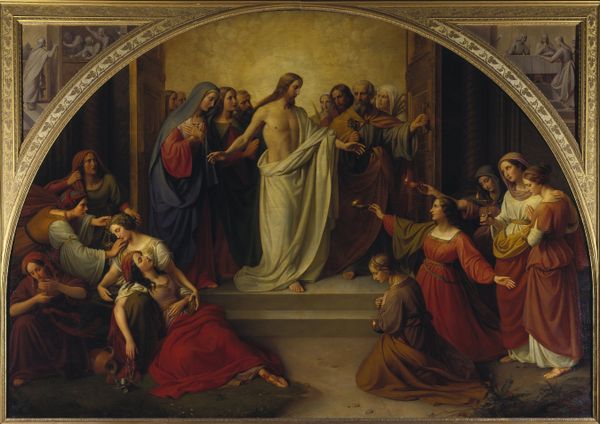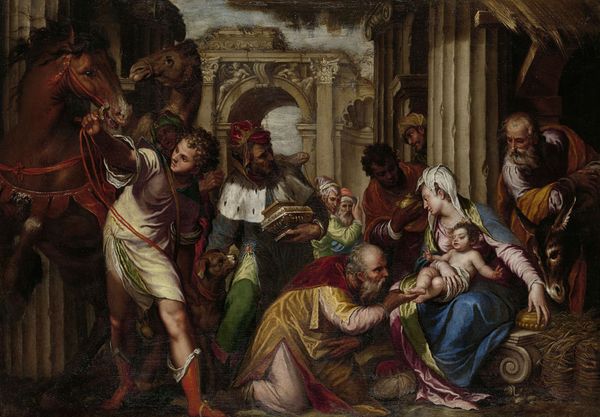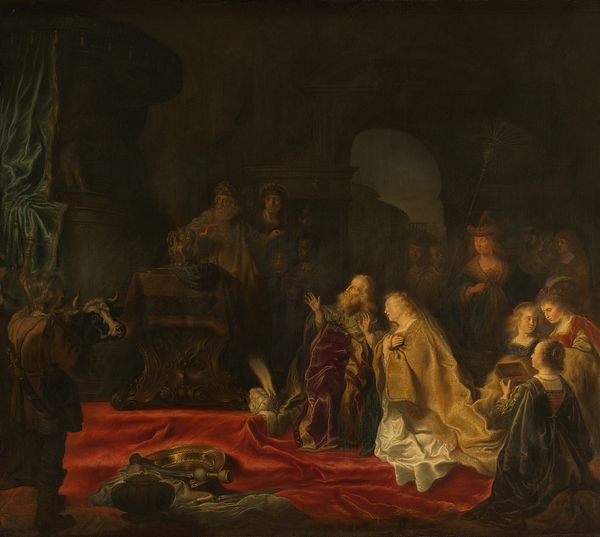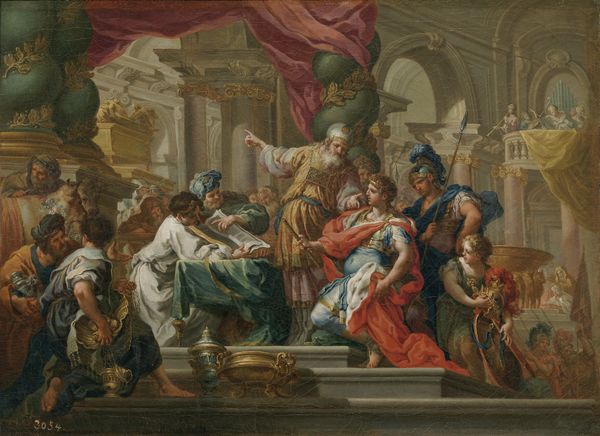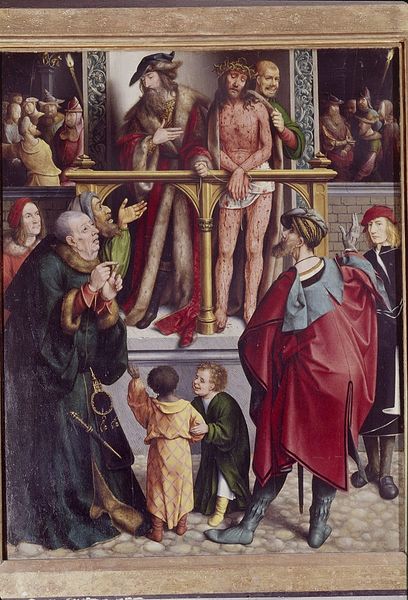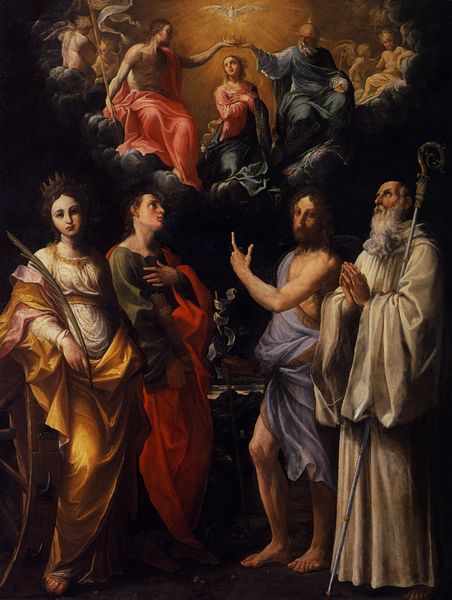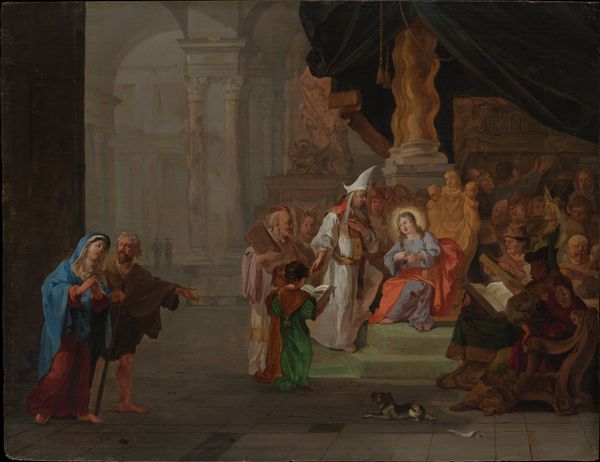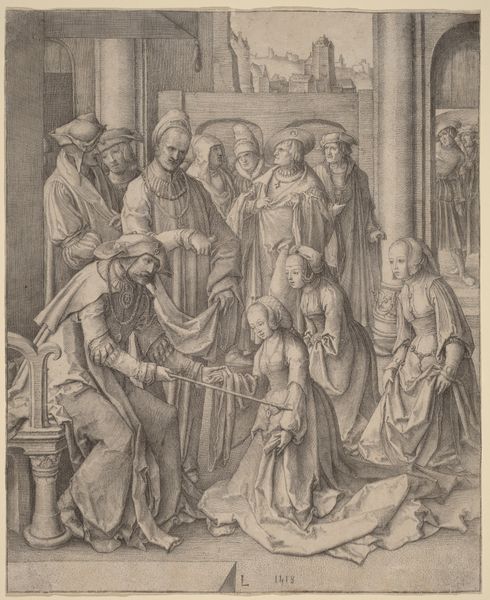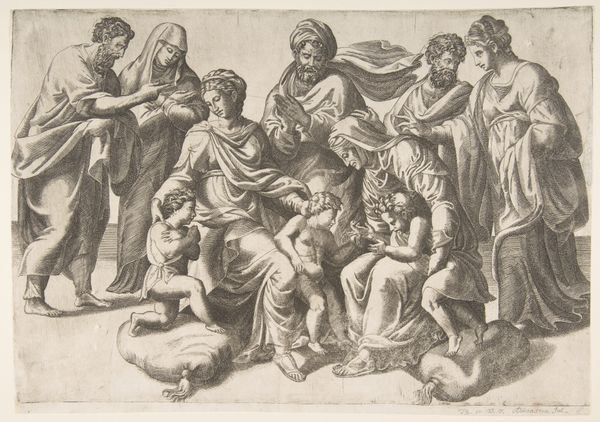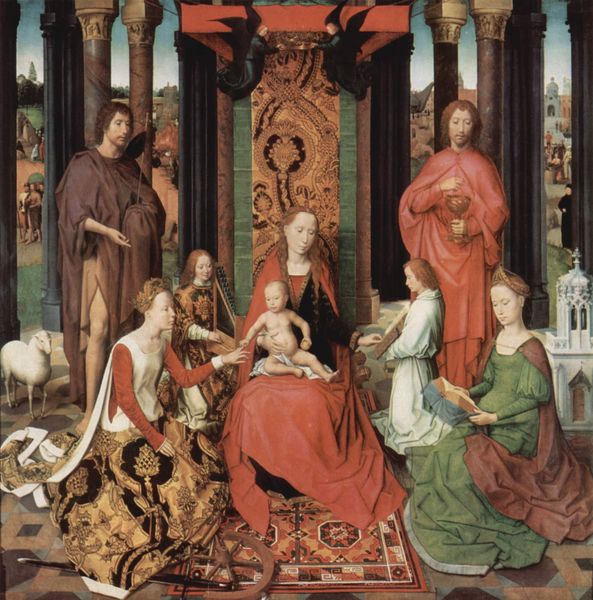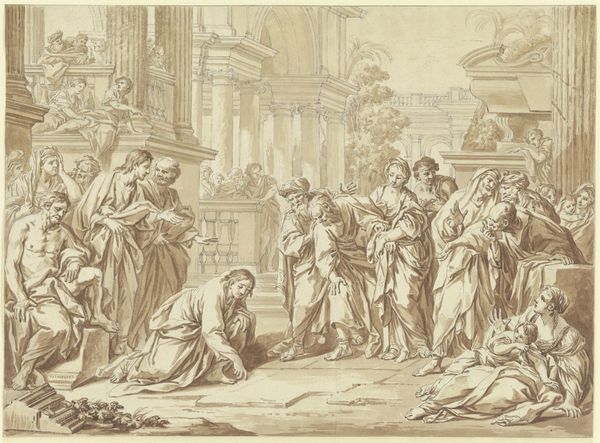
#
abstract painting
#
impressionist painting style
#
painted
#
possibly oil pastel
#
oil painting
#
famous-people
#
underpainting
#
painterly
#
mythology
#
painting painterly
#
watercolour bleed
#
watercolor
Dimensions: 236 x 475 cm
Copyright: Public domain
Curator: The sheer scale of this canvas is breathtaking, isn't it? Paolo Veronese painted "The Family of Darius before Alexander" around 1565. Look at the opulence – oil paint lavishly applied to convey silk, jewels, and classical architecture. Editor: My first impression is one of forced submission cloaked in finery. All that velvet can’t disguise the fact that we are seeing the vanquished begging for mercy from a young conqueror, Alexander. It speaks to the politics of power, gendered expectations and ultimately the performative nature of forgiveness. Curator: Precisely! Consider Veronese's process. This wasn't just about rendering figures; it was about constructing an elaborate stage. The materiality of the paint itself is key—thick impasto highlights the gold embroidery. The pigments… Where did they source them? Who mixed them? Each brushstroke required labour. Editor: And what labor! Consider the context. Venice in the 16th century was a mercantile empire built on trade—often exploitative. Veronese isn’t merely depicting a classical scene; he is inviting us to consider empire itself. The act of kneeling at someone's feet…that is a heavily coded form of communication between the oppressed and their oppressors. Curator: We also can’t ignore how he used expensive ultramarine, ground from lapis lazuli. Its deployment wasn’t just for aesthetics but to signal his patron's wealth and power—revealing that material consumption underpins the imagery, not merely illustrating the Macedonian conquest. Editor: And who has access to it? To the power structures? Who is denied it? Are these questions the work inspires us to ask even across such vast temporal distance? I think of the women in this painting, figures representing complex intersections of royalty and conquest, navigating deeply patriarchal systems. Curator: It is an impressive insight. Notice the composition again and the logistics of transporting this massive canvas itself - consider the artist’s workshop, the apprentices involved. The work is the product of collective labour but is signed with a single artist's name. Editor: Exactly. Art becomes a product, displayed prominently in spaces reflecting this hierarchy. The figures serve as a reminder that history remembers certain names while erasing the collective experiences of those deemed insignificant. Curator: Well, thank you for exploring these threads of production, of social context, and labor—a nuanced portrait, hopefully making it resonate with a contemporary viewer. Editor: I feel the conversation has opened this painting, revealing its layers. By connecting this visual history to modern systems, one can understand art functions far beyond its gilded frame.
Comments
No comments
Be the first to comment and join the conversation on the ultimate creative platform.
